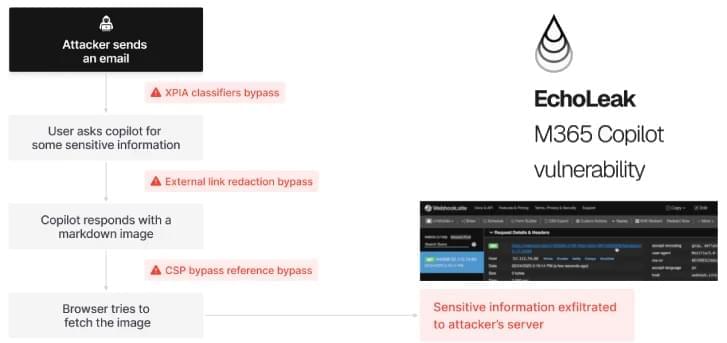Critical zero-click AI vulnerability EchoLeak exposed sensitive Microsoft 365 Copilot data; Microsoft patched it to prevent data leaks.



The AI bot explained: If a black hole bomb were somehow constructed and detonated, the energy release could be comparable to that of a supernova, one of the most powerful explosions in the universe. Such an event would release vast amounts of radiation and could have devastating effects on its surroundings.
A dance crew of four-legged robots from Boston Dynamics appeared on “America’s Got Talent” to perform a synchronized routine to Queen’s “Don’t Stop Me Now.”
Their performance was impressive enough to earn four “yes” votes from the judges — but one of the five robots experienced some stage fright, perhaps, and shut down in the middle of the routine. But the show must go on, so nevertheless, the four other robots persisted.
“Can I be honest with you?” judge Simon Cowell asked at the conclusion of their performance. “I don’t mean this in a cruel way. It was weirdly better that one of them died… because it showed how difficult this was.”


Daniel Sokolovsky, the co-founder and CEO of Warp, told TechCrunch that Warp is always looking for ways to make shipping more efficient for its customers, which include enterprises like Walmart, Gopuff, and HelloFresh. With the advancements in AI, the company thought there could be more opportunities to automate.
Warp can’t automate the long-haul trucking or short-range delivery aspects of the supply chain, Sokolovsky said, so it’s working on what it can potentially change: the workflows inside its warehouses.
Warp started by installing cameras into its test warehouse in Los Angeles and used computer vision to turn that data into a virtual warehouse to start experimenting.


Escherichia coli (E. coli) is a common bacterium that lives in the intestines of animals and humans, and it is often used to identify fecal contamination within the environment. E. coli can also easily develop resistance to antibiotics, making it an ideal organism for testing antimicrobial resistance—especially in certain agricultural environments where fecal material is used as manure or wastewater is reused.



Two RIKEN researchers have used a scheme for simplifying data to mimic how the brain of a fruit fly reduces the complexity of information about smells it perceives. This could also help enhance our understanding of how the human brain processes sensory data.
The work is published in the journal Science Advances.
Sensors related to our five senses are constantly providing huge amounts of information to the human brain. It would quickly become overloaded if it tried to process that sensory information without first simplifying it by reducing its number of dimensions.